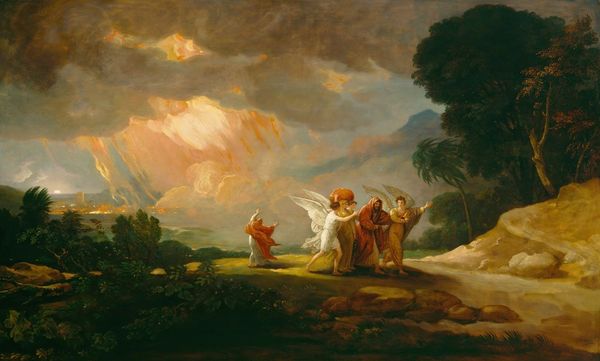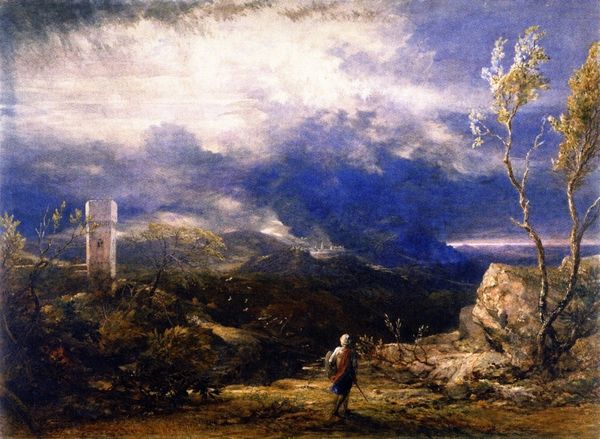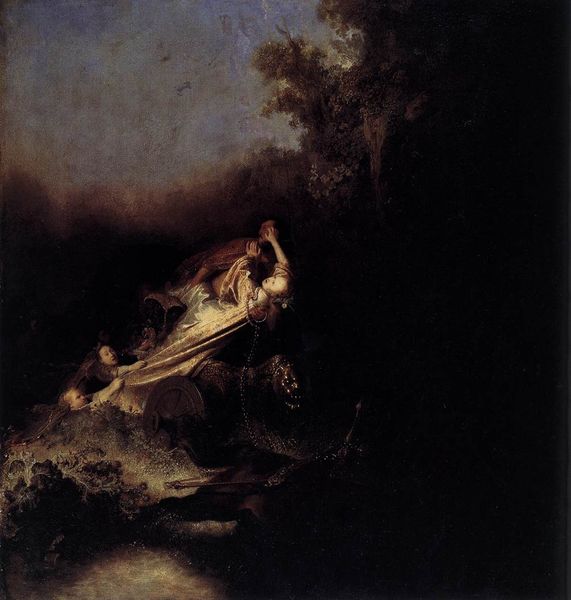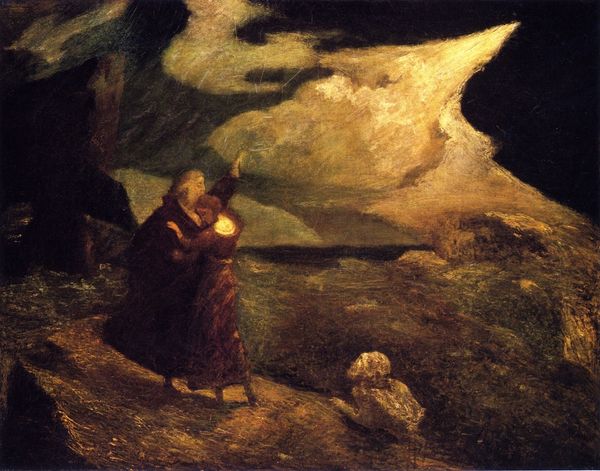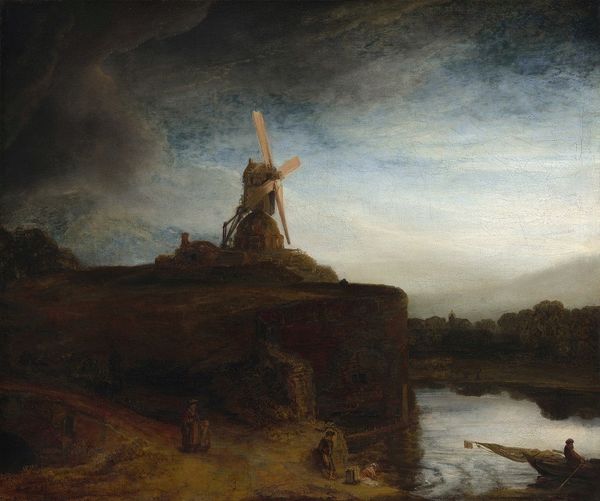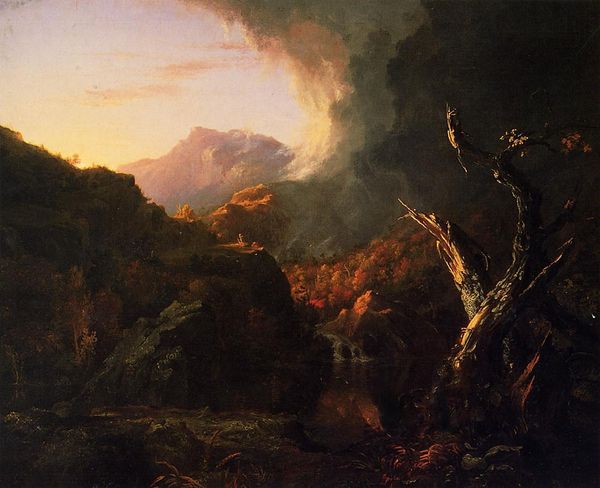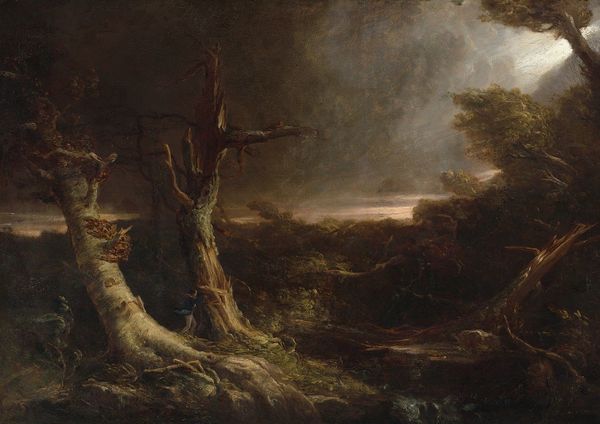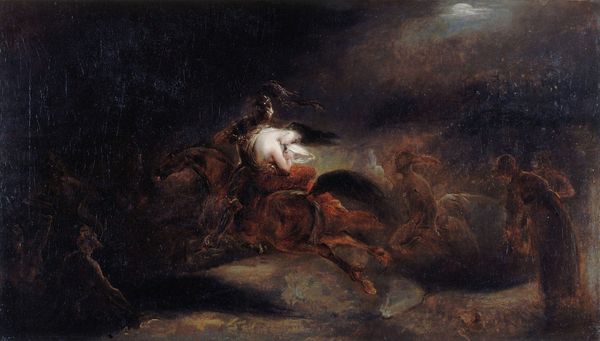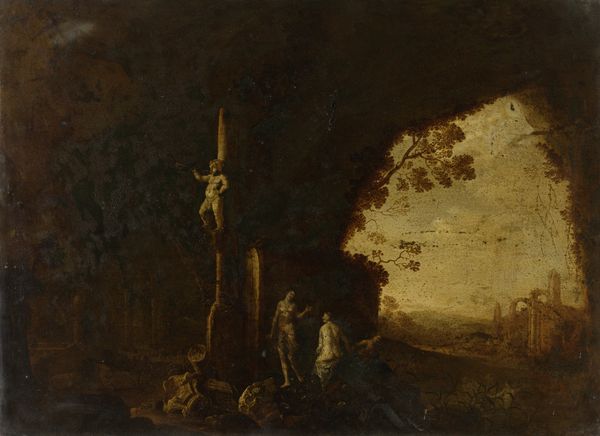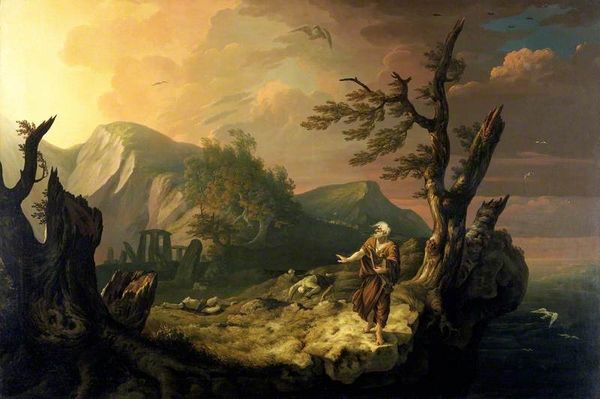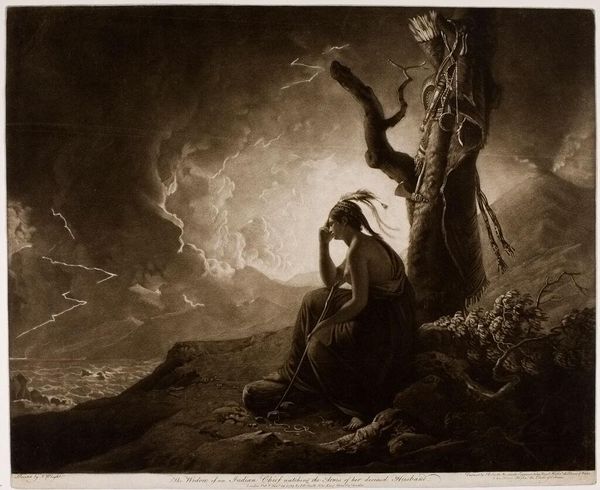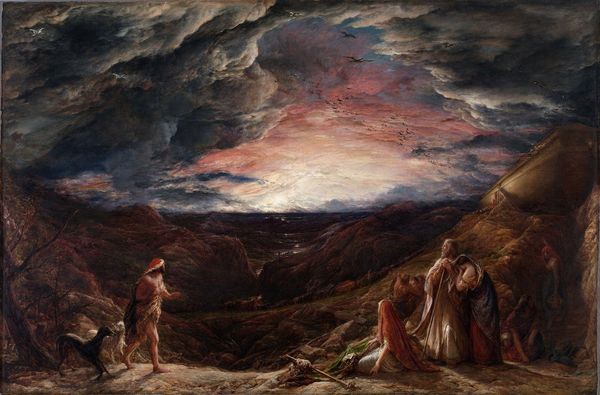
Dimensions: support: 635 x 1019 mm frame: 750 x 1138 x 74 mm
Copyright: CC-BY-NC-ND 4.0 DEED, Photo: Tate
Curator: The drama in William Williams’ "Thunderstorm with the Death of Amelia" is immediately captivating. What strikes you first? Editor: The sheer terror conveyed. The juxtaposition of the dark, chaotic storm with the figures huddled in apparent distress evokes a sense of helplessness against powerful forces. Curator: Absolutely. Williams, who lived from 1758 to 1797, employs the thunderstorm as a potent symbol, perhaps of divine wrath or the precariousness of life itself, don't you think? Editor: Or perhaps the violence inherent in the human condition, mirrored in the landscape. The burning structure atop the cliff suggests societal collapse or violence, amplifying Amelia's death as not just a personal tragedy, but a symptom of wider unrest. Curator: It's a compelling reading. The lightning, often associated with enlightenment, here seems destructive, a perversion of its symbolic potential. Editor: Indeed, it's a stark reminder that symbols are not fixed, but are actively shaped and reshaped by social and historical forces. This piece speaks volumes about the anxieties of its time. Curator: It leaves us contemplating the weight of those anxieties, and the timeless power of art to reflect them. Editor: Leaving me to think about who Amelia was and what her death meant for the people who knew her.
Comments
tate 6 months ago
⋮
http://www.tate.org.uk/art/artworks/williams-thunderstorm-with-the-death-of-amelia-t00519
Join the conversation
Join millions of artists and users on Artera today and experience the ultimate creative platform.
tate 6 months ago
⋮
This 'Sublime' landscape subject illustrates an episode in 'Summer' from James Thomson's cycle of poems 'The Seasons', first published in 1730. The passage describes the romance between Amelia and Celadon whose lovers' stroll ends in tragedy when they are caught in a violent storm and Amelia is struck dead by lightning. The scene of the disaster is set in Caernarvonshire, Wales, with the peak of Snowdon visible in the distance.Williams, who originally came from Norfolk, was an itinerant painter of landscapes and history subjects. His early training as a scenery painter for the theatre probably influenced his choice of dramatic subject-matter and powerful atmospheric effects. Gallery label, September 2004
